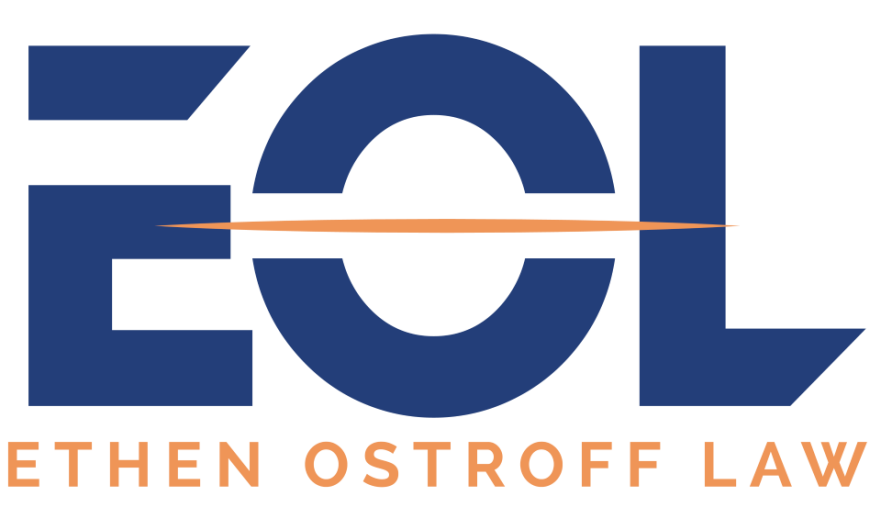PFAS Lawsuit | Suing Manufacturers Over Water Contamination
Per- and polyfluoroalkyl substances (PFAS) water contamination has become a pressing concern affecting communities across the US. PFAS are a group of human-made chemicals commonly found in various consumer products, industrial processes, and firefighting foams. These dangerous chemicals have managed to contaminate water supplies, affecting water systems nationwide. Mounting evidence has linked PFAS exposure to severe public and environmental health issues. This led to an increase in PFAS lawsuit against the manufacturers responsible for the contamination. Here, Ethen Ostroff Law explores the issue of PFAS contamination in water utilities, the legal consequences, and how it can help water utilities seek compensation for their damages and hold negligent manufacturers accountable.
What are PFAS?
PFAS are a group of synthetic chemicals. There are many kinds of PFAS, but two of the most commonly used and studied in the group are perfluorooctanoic acid (PFOA) and perfluorooctane sulfonate (PFOS). PFAS are ideal for making food packaging, firefighting foams, nonstick cookware, and waterproof clothing because they are heat, oil, and water-resistant.
Who are the top manufacturers of PFAS in the world?
- AGC Chemicals Americas, Inc.
- Arkema, Inc.
- The Chemours Co.
- Daikin Industries, Ltd.
- 3M Corp.
- Solvay S.A.
- Dongyue Group Limited
- Archroma Management GmbH
- Merck Group
- Bayer Corp.
- BASF SE
- Honeywell International Inc.
How do PFAS contaminate water systems?
Poor PFAS handling and disposal have resulted in the contamination of natural water sources like groundwater wells and rivers. According to a May 2018 Environmental Working Group report, over 1,500 drinking water systems in the US may be contaminated with PFOA and PFOS. Water districts and treatment plants had to bear the financial burden of removing PFAS from their water treatment systems.
The Prevalence of PFAS in Water Sources
The US Geological Survey tested tap water from 716 locations—269 private wells and 447 public supply sites—in all 50 states, Puerto Rico, the US Virgin Islands, and the District of Columbia. Data collected from 2016 to 2021 found PFAS in at least 45% of the drinking water samples. Although there are more than 12,000 different types of PFAS, only 32 are detectable by USGS lab tests, therefore 45% is likely a low estimate. Furthermore, PFAS concentrations were similar between public supplies and private wells.
In addition, nearly all municipal wastewater treatment plants have measurable levels of PFAS in their discharge. Most PFAS are generated from sources like everyday household items, manufacturing facilities, or sewage.
Map of PFAS Contamination in the US
To view the map of PFAS contamination in the US, click on the following link:
https://www.ewg.org/interactive-maps/pfas_contamination/map/
What are the major sources of PFAS contamination in the environment?
- Fire training and response sites where aqueous film-forming foams (AFFFs) have been used for many years by the US military, civilian airports, and other facilities to extinguish flammable liquid fires. Accidental releases of AFFF impact additional sites and consequently contaminate soil, surface water, and groundwater.
- Industrial sites like manufacturing facilities where PFAS-containing products are made or where PFAS are used in the process.
- Landfills because they are final repositories for PFAS-bearing consumer goods.
- Wastewater treatment plants (WWTPs), both municipal and industrial, where PFAS are introduced into the environment from discharges of treated effluent, leakage, air emissions, or disposal of biosolids and other byproducts generated during the treatment process.
FREE Consultation
What are the available PFAS treatment options?
Effective PFAS treatments include:
- Anion-exchange resin systems
- Cation exchange
- Granular activated carbon (GAC)
- Greensand filtration
- High-pressure membranes
- Microfiltration and ultrafiltration
- Multi-stage bubble aeration
- Powdered activated carbon (PAC)
- Reverse Osmosis
Ineffective treatments include:
- Advanced oxidation
- Biological treatment
- Boiling water
- Conventional treatment
- Disinfection
- Low-pressure membranes
- Oxidation
- Water softeners or iron filtration systems
How are PFAS regulated?
Starting in 2023, the US Environmental Protection Agency (EPA) will require some of the largest public drinking water systems to monitor for 29 different PFAS. Under the Toxic Substances Control Act, manufacturers must submit detailed information on some PFAS to the agency to guide regulatory action. They are also prohibited from using long-chain PFAS without prior review and approval.
On March 14, 2023, the EPA suggested a new rule to create specific limits for six PFAS in drinking water: PFOA, PFOS, perfluorononanoic acid (PFNA), hexafluoropropylene oxide dimer acid (HFPO-DA) and its ammonium salt, perfluorohexane sulfonic acid (PFHxS), perfluorobutane sulfonic acid (PFBS), and mixtures of these PFAS. The proposal follows the EPA’s plan from October 2021, which aimed to establish regulations for PFAS in drinking water.
The EPA’s proposed rule sets Maximum Contaminant Levels (MCLs) for the six PFAS to keep the levels in drinking water very low, measured in parts per trillion. PFOA and PFOS would have a zero MCL. The rule requires public water systems to monitor for PFAS, disclose to the public if the levels exceed the proposed standards, and take immediate action to lower them below the MCL.
Meanwhile, several states have enacted limits for PFAS in drinking water, surface water, and groundwater based on different health effects.

How do PFAS affect public health and the environment?
PFAS are highly persistent in our bodies and the environment because they do not break down naturally. They are almost everywhere and in everything. PFAS can move through soils, contaminate drinking water sources and accumulate in fish and wildlife. As a result, they cause health problems, including cancer, fertility issues, liver damage, obesity and thyroid disease.
What are the actions taken by water utilities to mitigate PFAS contamination?
- Monitor water for PFAS contamination
- Use activated carbon filters to remove PFAS from water
- Employ a membrane process to block PFAS in water
- Use Granular Activated Carbon beds to adsorb PFAS in water treatment
- Apply measures to prevent PFAS contamination at the source
- Blend water sources to reduce PFAS concentrations
- Educate the public about PFAS risks and safety measures
- Work with regulators to meet PFAS standards
- Stay updated with new PFAS removal methods and technologies
What are the actions taken by water districts against PFAS manufacturers?
Water districts have taken a proactive stance in holding PFAS manufacturers accountable as part of a broader effort to ensure public safety, protect water quality, and seek justice for the communities impacted by PFAS water contamination, including:
- Suing PFAS manufacturers to cover treatment and mitigation costs
- Uniting with affected parties for better outcomes in PFAS class action lawsuits
- Using public influence to hold PFAS manufacturers accountable
- Urging stronger regulatory action and transparency
- Supporting legislation to make PFAS manufacturers responsible for environmental impacts
- Seeking specialized legal counsel to navigate PFAS contamination cases
- Raising awareness about PFAS impact and the manufacturers’ roles
- Collaborating with regulatory bodies to take action against PFAS manufacturers
- Seeking reimbursement for PFAS contamination expenses
- Considering settlement negotiations for compensation and remediation efforts
Are there PFAS lawsuit against manufacturers?
Currently, there’s a multidistrict litigation (MDL-2873) is before Judge Richard Mark Gergel of the US District Court of South Carolina. The South Carolina court is handling over 2,500 cases from across the country involving AFFFs and PFAS contamination. The MDL includes hundreds of local governments suing to recover costs due to contamination of public water supplies. Other plaintiffs in the MDL are individuals bringing traditional product liability cases, alleging that exposure to AFFF caused cancer. Even though several different companies manufacture and sell products containing PFAS, 3M and DuPont are the primary defendants in this litigation.
What other companies are in the PFAS lawsuits?
The defendants in the PFAS lawsuit include:
- 3M Co.
- Archroma Management GmbH
- BASF SE
- Clariant AG
- Corteva Inc.
- DuPont de Nemours Inc.
- Honeywell International Inc.
- Johnson Controls International PLC
- Mine Safety Appliances Co.
- NSK Americas Inc.
- Phillips 66
- Raytheon Technologies Corp.
- The Chemours Co.
- W. L. Gore & Associates Inc.
How much is the PFAS lawsuit settlement?
The PFAS lawsuit settlement amounts can differ significantly depending on the specifics of each case. For example, 3M agreed to pay $10.3 billion to settle lawsuits relating to “forever chemicals” contaminating drinking water supplies. These lawsuits alleged that toxic PFAS had contaminated water sources in the United States. Similarly, Chemours, Corteva, and DuPont established a $1.185 billion settlement fund to address all PFAS-related drinking water claims by a defined class of public water systems that serve a significant portion of the US. The fund’s purpose is to remove toxic PFAS from public drinking water systems and address the consequences of contamination.
What is the 3M lawsuit for forever chemicals?
Thousands of PFAS water contamination lawsuit were filed against 3M. Plaintiffs claim 3M knew the chemicals in its consumer products could cause cancer and other health problems. In December 2022, 3M announced it would stop producing PFAS by 2025 amid increased legal and regulatory scrutiny. The company struck a tentative $10.3 billion deal with US cities and towns to settle lawsuits over the contamination of many public drinking water systems with potentially harmful compounds like PFAS. Nevertheless, 3M said the settlement does not admit any liability.
What is the 3M settlement for PFAS?
3M reached a $10.3 billion settlement over “forever chemicals” in public drinking water systems to settle lawsuits. The chemical producer has agreed to pay the settlement over 13 years to help municipalities test for and clean up toxic PFAS chemicals in public water supplies. The deal comes after hundreds of claimants sued the company for its role in contaminating drinking water.
What states are suing for PFAS?
States including Maine, Maryland, New Mexico, and Rhode Island, have filed lawsuits against PFAS manufacturers like 3M, Chemours, Corteva, and DuPont. They claim these chemical companies’ PFAS are harming residents and the environment. The states ask for billions of dollars in damages to compensate for the health effects and the costs of cleaning up and monitoring polluted sites.
Who can bring a PFAS contamination lawsuit against manufacturers?
- Water utilities, such as water districts and public water systems
- Cities or municipalities that have incurred costs or damages due to PFAS water contamination
- Businesses affected by PFAS water contamination
- Persons who own property or home in PFAS-affected areas
- Individuals who have suffered health problems because of PFAS exposure from contaminated water
- People who live or have lived in areas affected by PFAS water contamination
Why choose Ethen Ostroff Law for your PFAS contamination lawsuit against manufacturers?
Water utilities are the most affected complainants in PFAS lawsuit. Ethen Ostroff Law has partnered with law firms who are dedicated in handling environmental litigation, including PFAS water contamination cases. We investigate your case, gather evidence, and build a legal strategy. We empathize with the hardships water utilities are enduring, and our commitment lies in providing compassionate legal representation throughout the process. We have unwavering dedication to achieving the best possible outcomes for our water utility clients.
What are you waiting for? Contact Ethen Ostroff Law now at 610-510-8883 ( by calling this number, you consent to receive SMS updates from Ethen Ostroff Law) or Submit Form to get free consultation.


